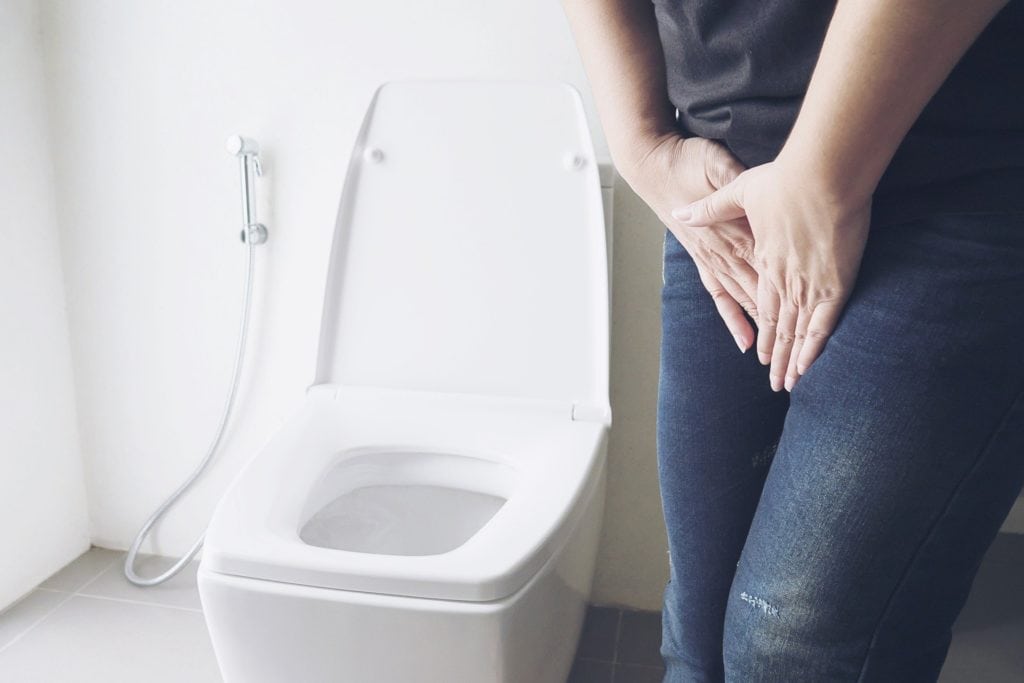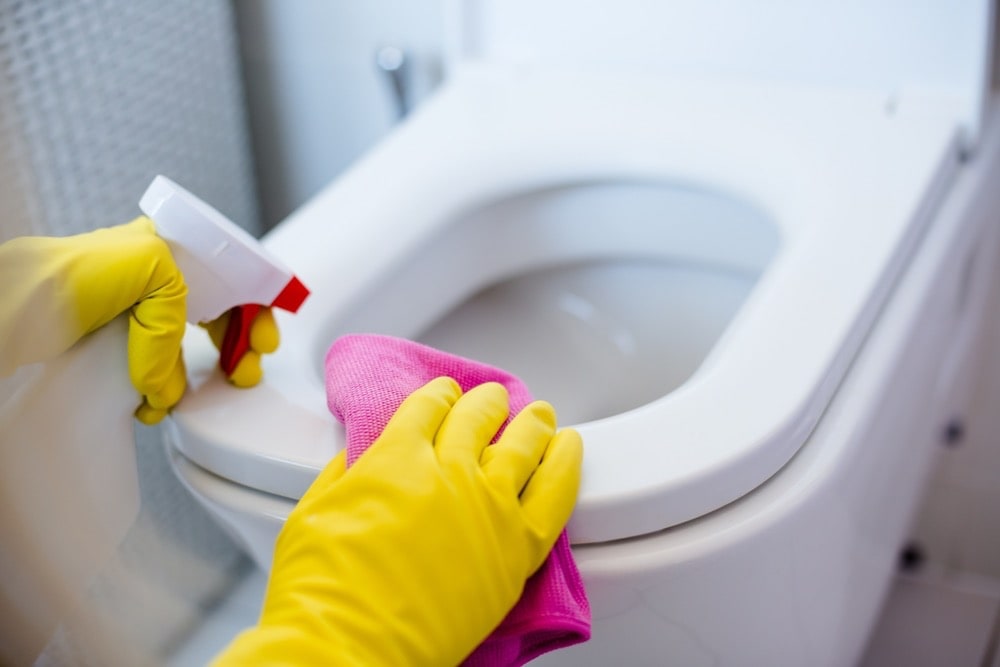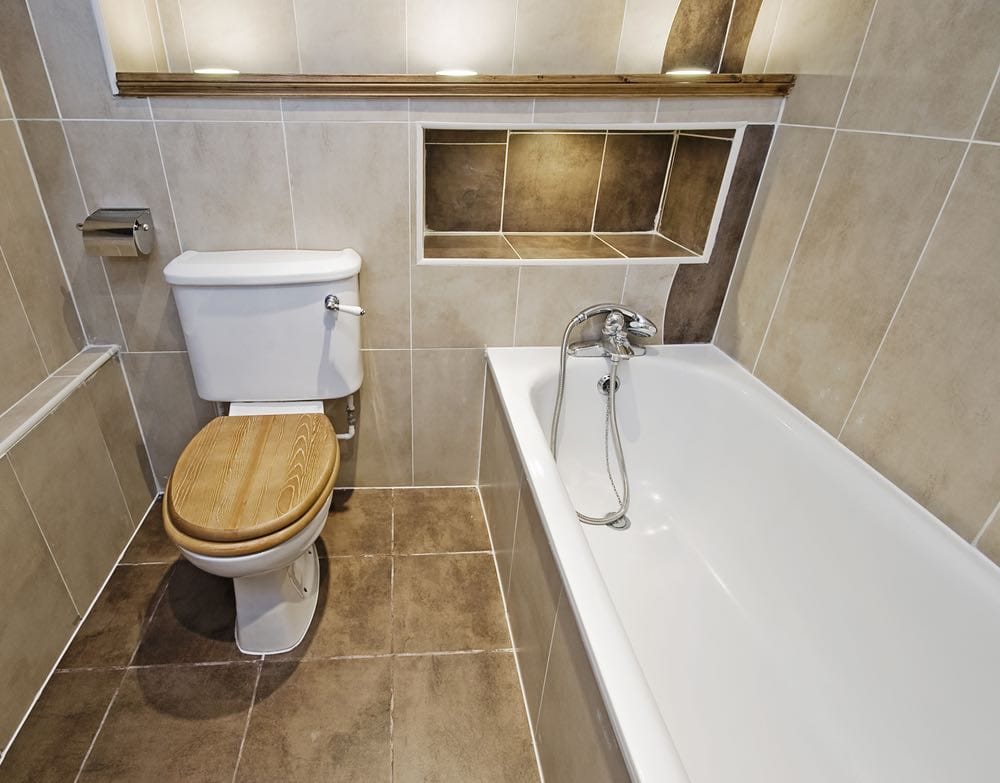Wood vs Plastic Toilet Seats: Which Is Better?
-
Pete Ortiz
- Last updated:

Experts don’t recommend changing out your toilet seat too often, partly because it’s not easy to dispose of the old ones. However, there comes a time when you just can’t clean your old seat anymore. When your toilet seat breaks beyond repair, the grime gets too much, or when you’re remodeling your entire bathroom and your old seat won’t match, it’s time to pick a new one. If you’ve ever shopped for a seat, you know the choices can quickly get overwhelming.
This article will help you answer a common question; what should your toilet seat be made of? Almost all seats are built from either wood or plastic, so today, we’ll provide a head-to-head comparison.
We’ll give you the information you need to make the right decision but be warned that bathroom debates like this rarely have a clear-cut answer. Your personal experience is the most important factor. With that in mind, let’s dive into it.
 Pros and Cons at a Glance
Pros and Cons at a Glance

- Stable temperature
- Traditional look
- Can be more durable
- Waterproof
- Longer lifespan
- Easier to clean
- Can close softly
- Rot over time
- Worse at shedding moisture
- Harder to clean than plastic
- No soft-close option
- Less sturdy
- Less interesting aesthetic
- Worse at holding heat
Comfort
As the only appliance you’ll regularly touch with your bare bottom, user-friendliness is paramount in a toilet seat. Wooden and plastic toilet seats are comfortable, but the textures are different. Some people prefer the smoothness of plastic, while others enjoy the feeling of finished wood.
It’s the temperature that makes the big difference. Wood is much less vulnerable to variations in air temperature. A plastic toilet seat will be frigid on a cold morning when you’ve just gotten out of bed and haven’t been running the heater yet. A wooden seat might be a bit cool, but it retains heat far better.
Of course, you can buy heaters for plastic seats. You could also just put a space heater in your bathroom. But with a wooden seat, you won’t have to do either.
Winner: Wood
Price
It might seem as though wooden seats would be more expensive, but after researching the prices of wooden and plastic seats, we concluded that the material doesn’t impact the cost on its own. The quality of the construction, whether plastic or wood, makes much more of a difference, as do any bonus features like heaters or washlets.
Winner: Tie
Lifespan
You’d expect wood to last forever, right? Wood is used to make heirloom furniture that lasts forever, while plastic is better for disposable products we throw out after one use. But that’s not the whole story. Your antique china cabinet is not getting regularly urinated on (at least, we hope it’s not). Toilet seats are constantly exposed to sweat, moisture, and human waste, so the durability equation is vastly altered.
Wood can resist impacts better than plastic, but it’s more likely to warp and rot over the long term. While wooden seats are heavily treated to resist water, they’ll never be as waterproof as plastics. Over time, if a wooden seat and a plastic seat of similar quality are exposed to the same amount of sweat and caustic liquid, the wooden seat will become unusable more quickly.
Winner: Plastic
Cleaning

Toilet seats are some of the most unsanitary objects in your house and need to be regularly cleaned. When asking which type of toilet seat is easiest to clean, plastic comes out on top again.
The waterproof varnish on wooden seats is also supposed to resist waste, grime, and dirt and often does an outstanding job. However, the texture of the wood is naturally rougher than that of plastic, leading to more cracks and crevices where debris and bacteria can gather.
Over time, wood holds in unpleasant smells that are tough to eliminate. If you get a wood seat for the look (see Aesthetics), be prepared for a harder time finding stains.
Winner: Plastic
Aesthetics
Despite plastics of equal strength being available, companies still make products out of wood. The aesthetic appeal of wood is the biggest reason why. Plastic is impersonal, plain, and mass-produced; when you look at something made of wood, you can easily imagine exactly how it was made.

Authenticity is increasingly vital for today’s consumers, and wood will always look more authentic than plastic. At best, a plastic toilet seat disappears into a bathroom color scheme, but a wooden seat can enhance the whole space.
Yes, you can get faux-wood seats made of plastic, but they are much more expensive.
Winner: Wood
Other Considerations
Many of today’s toilets come with bonus features. Far from being unnecessary bells and whistles, the add-ons can significantly enhance the user’s comfort. Heated seats, washlets, and smart toilets are life-changing for people with mobility issues, and as of right now, they’re overwhelmingly being made for plastic seats.
While we cited temperature variations as a knock against plastic toilet seats, it works to plastic’s advantage when accounting for heated seats. It takes much less energy to change the plastic’s temperature than wood, and there’s far less risk of burning.
A soft closing seat is another advantage of plastic models. Wooden seats are almost always loosely hinged, meaning they drop with a thud if you don’t close them gently. The plastic soft-closure seats can be released at any angle to float shut without a sound.
Winner: Plastic
 Final Verdict
Final Verdict
We said that bathroom controversies don’t always have clear-cut solutions, but this is one of the clearer ones. Plastic toilet seats are priced the same as wood, and they’re more durable and easier to clean. The only advantages of wood—a more reliable temperature and a superior look—can be negated by features available for plastic seats.
Unless you’re in the midst of a rustic bathroom makeover and are already over budget, we recommend going with a plastic toilet seat. If you don’t like how it looks, you can always get an attractive seat cover.
Featured Image Credit: Pixabay
Contents

 Pros and Cons at a Glance
Pros and Cons at a Glance Final Verdict
Final Verdict